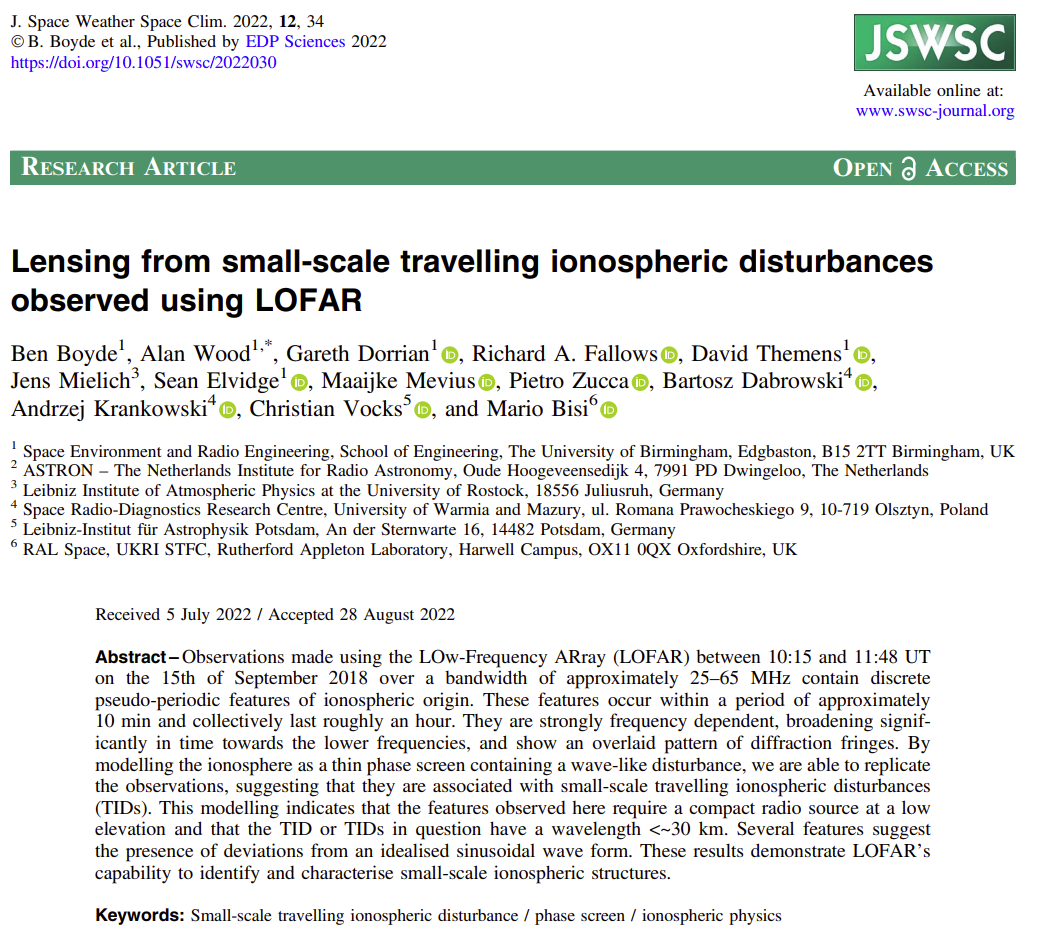Ionospheric Science with LOFAR
The Low-Frequency Array (LOFAR) is a cutting-edge radio telescope that opens new avenues for exploring fascinating ionospheric science. With its unique capabilities, LOFAR enables researchers in SERENE to investigate and better understand small-scale structures in the ionosphere, develop phase screen modeling, and investigate coupling with the mesosphere.
By leveraging LOFAR's high sensitivity and wide-field imaging, we can identify and classify small-scale structures within the ionosphere. These structures, which were previously difficult to detect, play a crucial role in understanding the complex behavior of the ionosphere and its interactions with both the Earth's atmosphere and space weather. Through the study of these structures, allow us to gain invaluable insights into the underlying processes that govern ionospheric dynamics and variability.
In addition, using LOFAR data enables us to delve deeper into our phase screen modeling, a technique used to simulate the ionosphere's impact on radio wave propagation. By analyzing the scintillation and refraction of radio waves as they pass through the ionosphere, we develop more accurate models of this complex region, ultimately leading to improved prediction and mitigation of ionospheric effects on communication and navigation systems.
Furthermore, LOFAR provides a unique platform for investigating the coupling between the ionosphere and the mesosphere. This interaction, which occurs at the boundary between the Earth's upper atmosphere and space, plays a significant role in atmospheric dynamics and influences a wide range of phenomena, from auroras to gravity wave propagation. By utilizing LOFAR's advanced capabilities, researchers can shed light on the intricate processes governing mesosphere-ionosphere coupling and further our understanding of this vital interface in Earth's atmospheric system.
